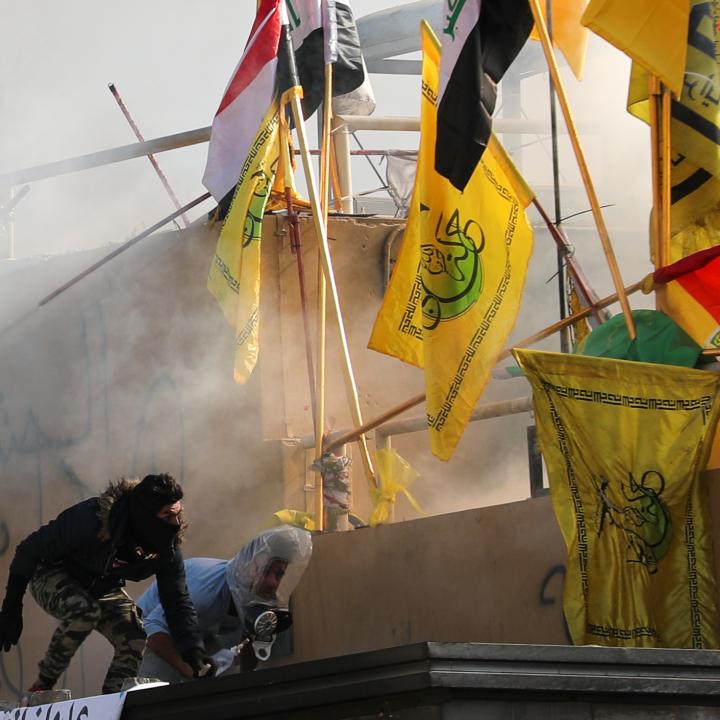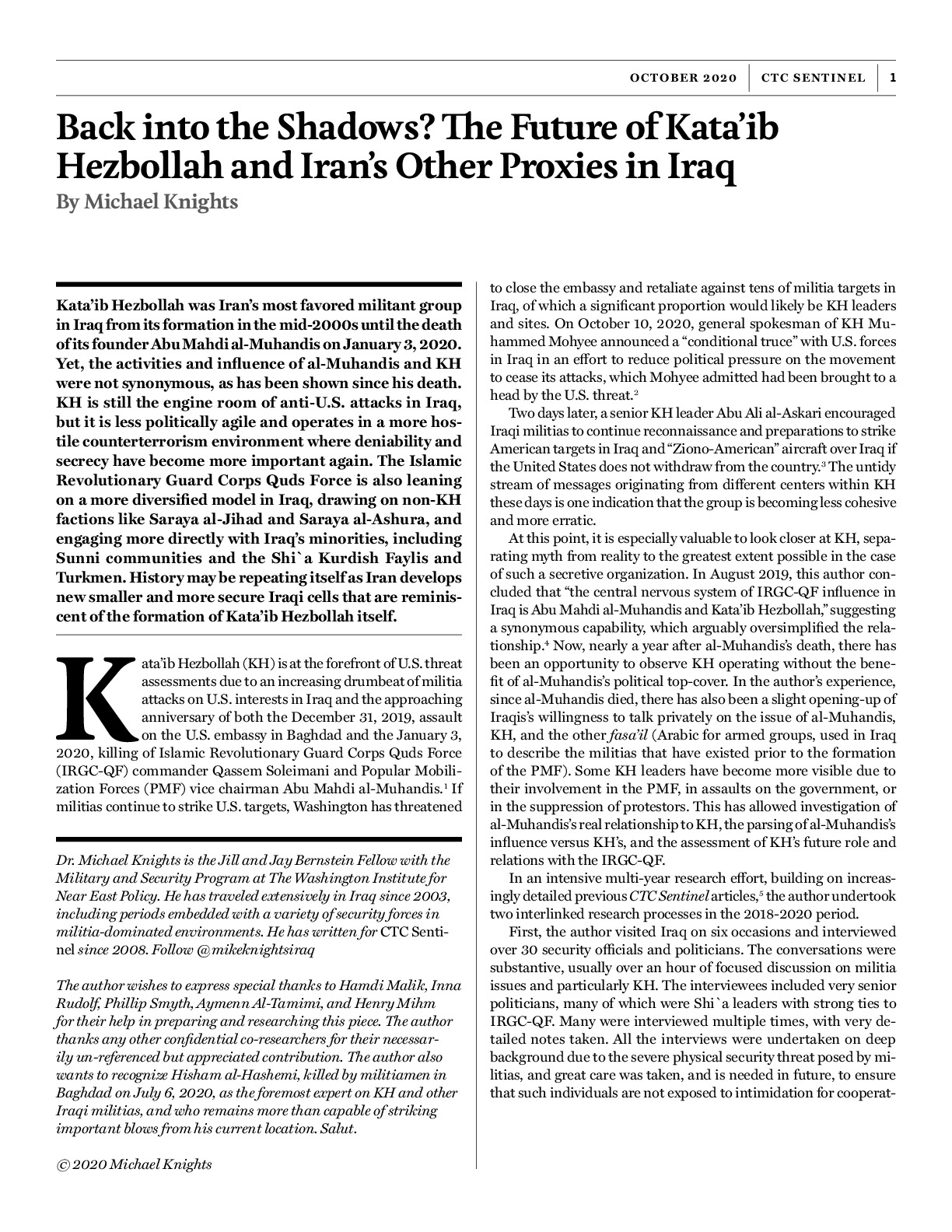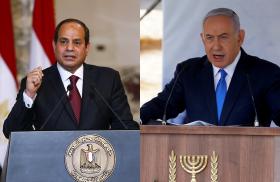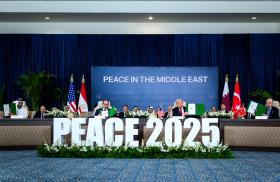
- Policy Analysis
- Articles & Op-Eds
Back into the Shadows? The Future of Kata'ib Hezbollah and Iran's Other Proxies in Iraq
Oct 23, 2020
Also available in
Also published in CTC Sentinel





